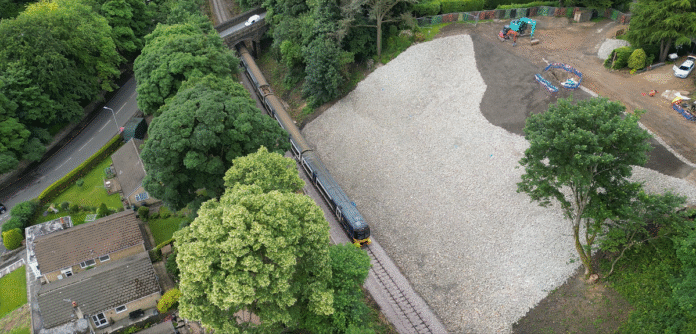Network Rail and the Met Office have signed a new Memorandum of Understanding to accelerate research into how weather affects the railway. The agreement aims to cut the time needed to commission research from months to days, allowing for a quicker response to the challenges posed by extreme weather.
The partnership will focus on a number of key areas, including probabilistic weather forecasting and understanding the complex links between earthwork failures, rainfall, soil wetness, and geology.
Rail Minister Lord Peter Hendy said: “Our railways are the backbone of Britain’s economy, connecting communities and businesses across the country, and supporting the daily trips that keep the nation moving. Extreme weather shouldn’t impact people’s journeys or disrupt the reliable service passengers depend on and expect, especially when every delayed journey affects people getting to work, visiting family, or accessing vital services. This partnership between Network Rail and the Met Office is a game changer and represents exactly the kind of innovative collaboration we need to build a more resilient railway for the future. By combining world-class weather expertise with cutting-edge rail engineering, we’re investing in smarter solutions that will keep Britain moving, whatever the weather throws at us.”
The new agreement streamlines procurement processes, allowing the two government bodies to work together more efficiently to share data and develop innovative science and research. The partnership has already seen work on helping rail controllers make decisions on when it is safe to run trains and at what speed.
Network Rail’s Industry Weather Response Director, Lisa Angus, said: “Extreme weather is one of the biggest challenges facing the railway and one of the major causes of delays to passengers and freight. Science plays a significant role in our response, in particular using the vast amount of data and data processing capacity the Met Office has. For example, we are one of the world leaders in understanding the links between rainfall and earthworks, from soil types to rain intensity, and that is thanks to our partnership with the researchers at the Met Office. This MOU will only help us increase our working together and provide a better deal for passengers – and taxpayers.”
Russell Shanley, Head of Programme Management for Network Rail’s weather team, said: “Making decisions on when to run trains through storms and how fast to run them is a huge responsibility for our controllers and we need to give them the best information possible to make those calls. Currently, we understandably err on the side of caution and either slow trains down or stop them altogether, when it might be possible to keep things moving safely if we had the right data to drive that decision. This MOU will take us another step forward in that research and the drive to keep people moving safely.”
The new deal does not affect the day-to-day weather forecasting provided to Network Rail by the private firm MetDesk, which is used for operational decisions like fire risk assessments and managing risks from heavy rain.





